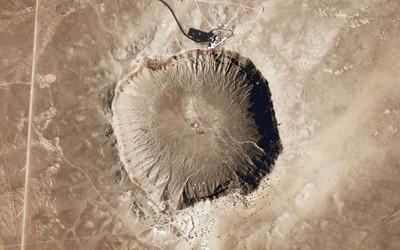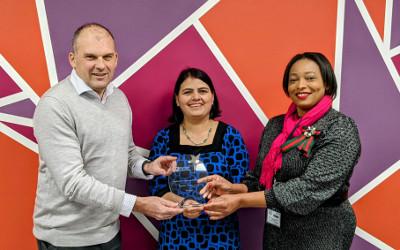News & articles

Japanese fellowship recognises OU scientist's Mars atmosphere research
The Japan Society for the Promotion of Science (JSPS) has awarded Post Doctoral Research Associate Dr Juan Alday, a scientist in the ExoMars research group at The Open University (OU), a research fellowship to study the atmosphere of Mars.

OU research shapes new framework for nursery practitioners to empower children
Research by Dr Natalie Canning, Senior Lecturer of Early Childhood and Co-Director of The Open University’s (OU) Children’s Research Centre, has helped shape a new framework for early childhood practitioners.

Latest Webb telescope results uncover dark, icy beginnings of life's building blocks
The discovery of diverse ices in the darkest, coldest regions of a molecular cloud measured to date has been announced by an international team of astronomers - including from The Open University - using the NASA/ESA/CSA James Webb Space Telescope.

Research into play-based learning to address the learning crisis in Africa
A new research grant is looking at how teaching teachers in Africa to adopt play-based practice could improve learning outcomes.

OU researchers and partners release thousands of previously unseen space images
Popular citizen science project Galaxy Zoo has released 22,000 high-quality images to the public. Anyone in the world can help astronomers classify pictures taken with one of the most advanced instruments installed on one of the world's leading telescopes.

International study that reveals how Earth got its water, thanks to the OU
Results from a new global research project published in Nature Astronomy indicate asteroids brought water to Earth.

People's Choice-winning sex-trafficking survivor research recognised
Professor Kevin Shakesheff, Pro-Vice-Chancellor for Research and Innovation at The Open University (OU), presented Dr Margaret Ebubedike and Dr Saraswati Dawadi with The People's Choice award for their research helping sex-trafficking survivors rebuild their lives at a ceremony at the University's Milton Keynes Campus earlier this month.

What does Mars sound like? Rover microphone has recorded the red planet’s dust devils
A dust devil looks a bit like a tornado, but is weaker and rarely lasts more than about a minute. It is a twisting column of warmed air scooting across sun-heated ground, made visible by the dust that it lofts upwards. Although usually benign, occasionally dust devils can kill.

New extended reality studios to expand research into learning
The Open University has received £5.8M from the Office for Students to develop extended reality studios to expand its teaching and learning with augmented and virtual reality.

Aspects of empowerment in legislation and education
The Open University hosted Professor Stephanie Pywell’s inaugural lecture on 6 December 2022.
Contact our news team
For all out of hours enquiries, please telephone +44 (0)7901 515891
Contact details